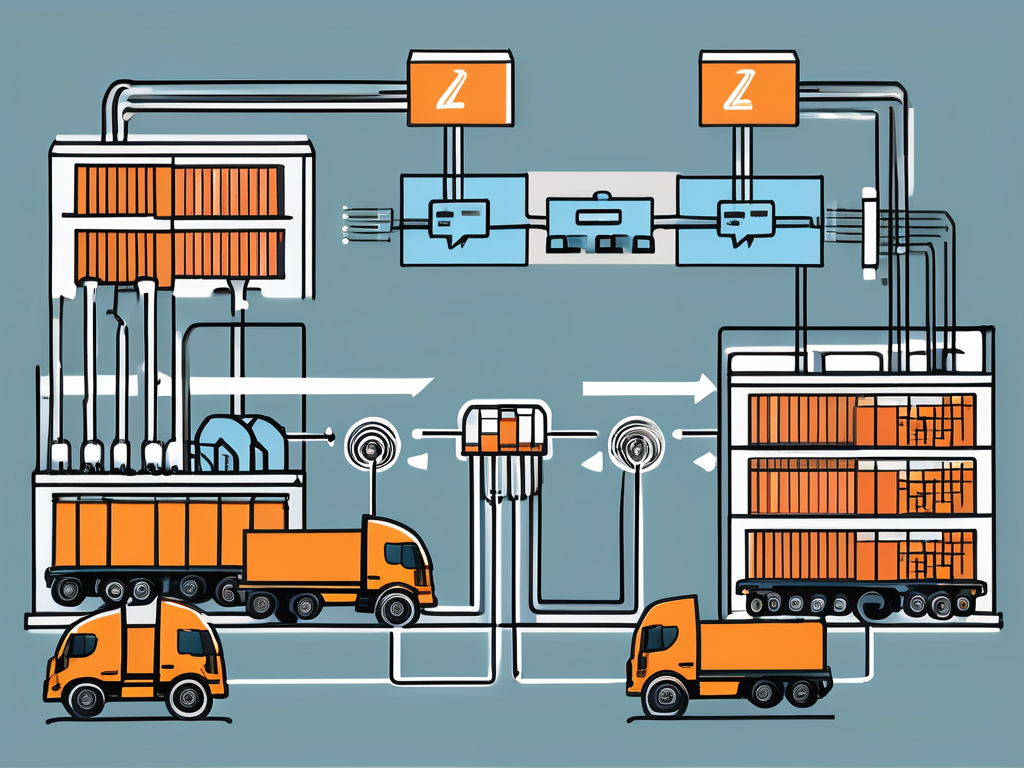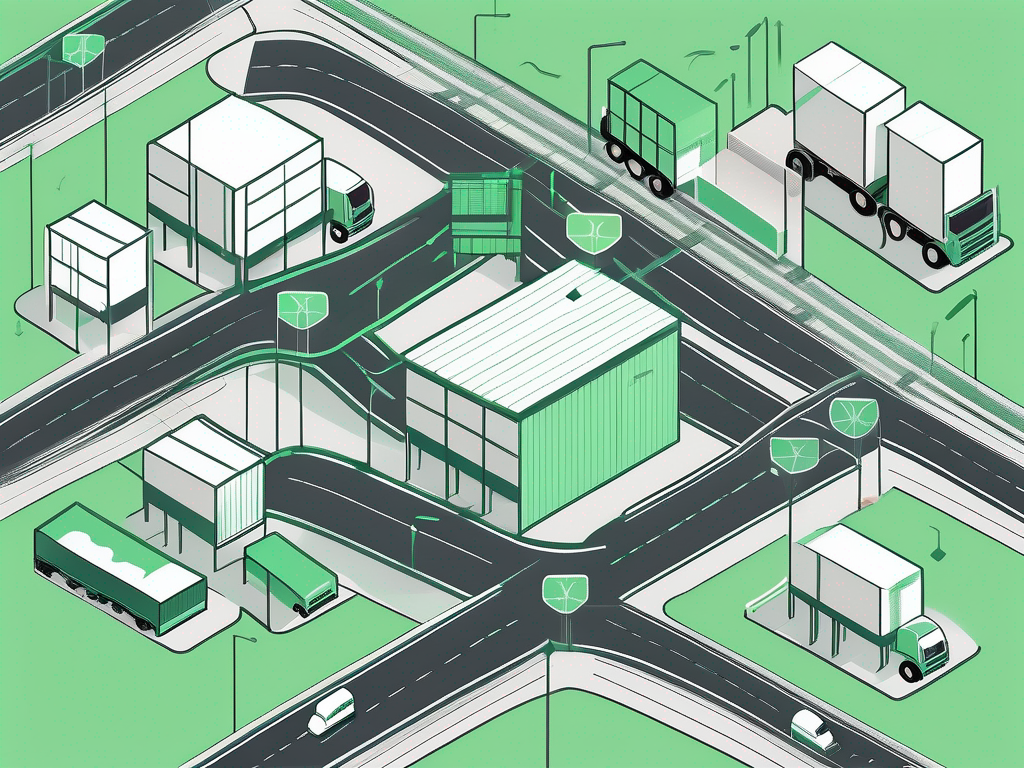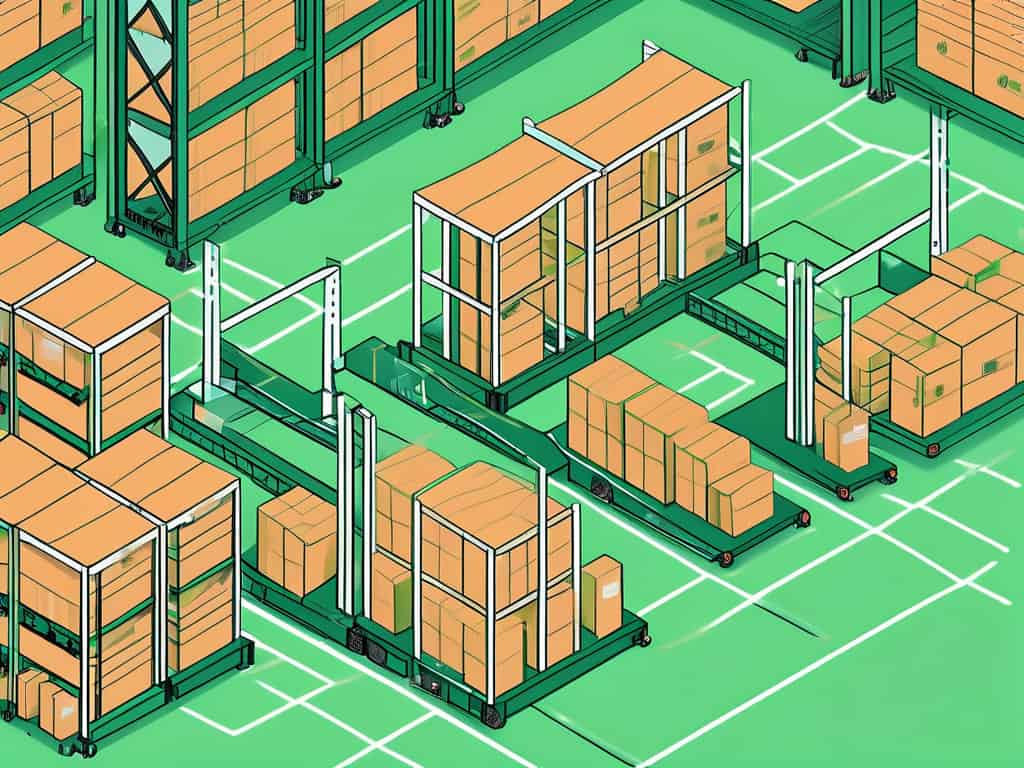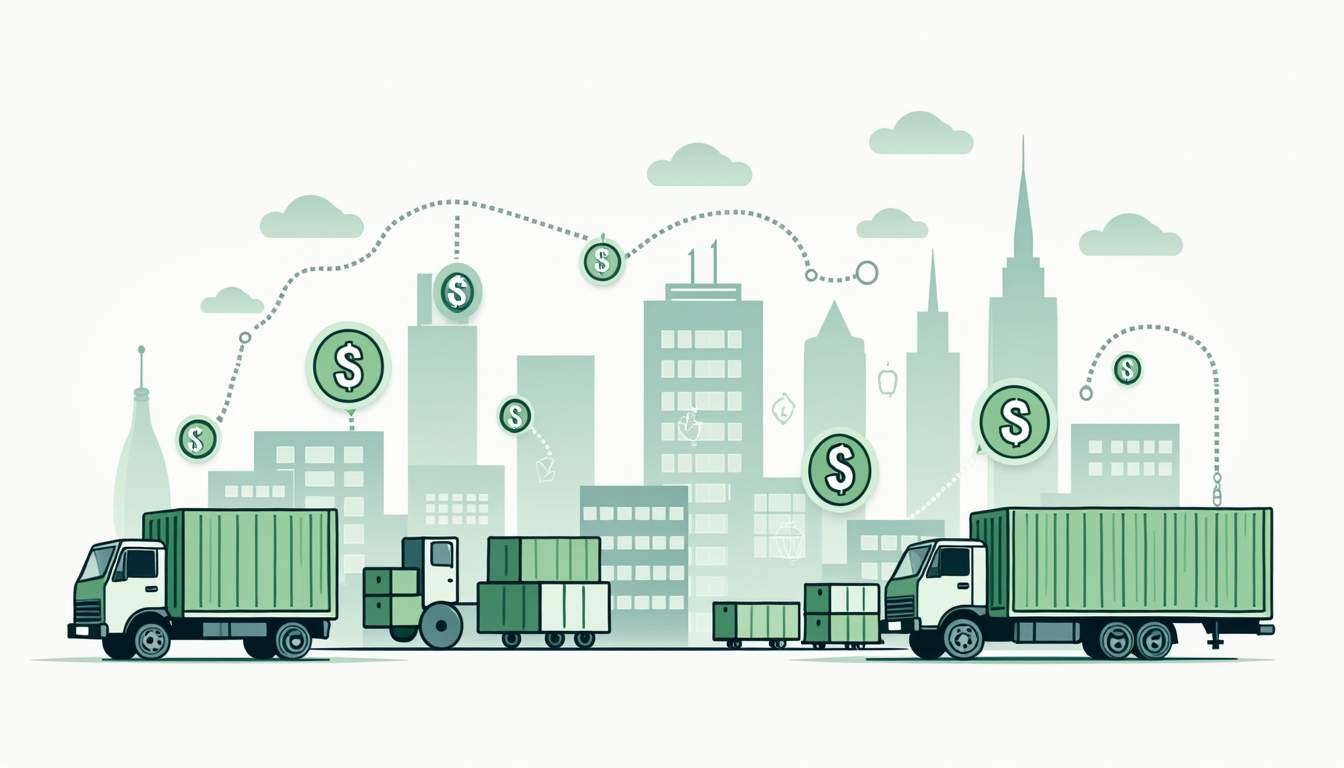Share this
2PL vs 3PL: Which Is Better for DTC Ecommerce?
by Shipfusion Team on Oct. 14, 2024

When it comes to direct-to-consumer (DTC) ecommerce, choosing the right logistics model can significantly impact operational efficiency and customer satisfaction. Two commonly used options are second-party logistics (2PL) and third-party logistics (3PL), each with its own strengths and limitations.
The decision between a 2PL vs 3PL provider involves understanding how much control you want over your outsourced logistics, the scalability of your operations, and your business's specific needs. In this article, we’ll break down the differences between 2PL and 3PL logistics models and explore which might be the better fit for your DTC ecommerce business.
2PL vs 3PL: How Their Roles In Ecommerce Differ
In the context of direct-to-consumer (DTC) ecommerce, logistics play a pivotal role in ensuring that products reach customers efficiently. Two common types of logistics providers are 2PL and 3PL, each offering unique services and advantages.
2PL, or second party logistics, involves a direct relationship between the business and a transportation provider. This model often includes basic transportation services without the additional features you might expect from more comprehensive logistics solutions. Companies using a 2PL typically work with carriers to transport goods from point A to point B but manage the rest of the logistics process in-house.
On the other hand, 3PL stands for third party logistics. This model encompasses a broader range of services, including warehousing, inventory management, order fulfillment, and shipping. Businesses engaging with a 3PL provider often outsource significant portions of their logistics operations, focusing on enhancing efficiency and reducing overhead costs.
Diving Deeper Into 2PLs: Second-Party Logistics
2PL providers are best suited for businesses that possess the capability to manage their logistics processes internally but require assistance with transportation. These firms typically handle aspects like freight management and shipping while maintaining their own warehouses and inventory systems.
Businesses choose this route when they want to maintain a high level of control over their logistics while accessing reliable transportation services. It appeals to smaller operations or firms located in specific regions where logistics is manageable.
Going In-Depth on 3PLs: Third-Party Logistics
Conversely, the 3PL model is designed for scalability. Companies can significantly offload various logistics responsibilities, such as order fulfillment or returns management, to the 3PL provider. For instance, if a DTC retailer has a surge in sales during a holiday season, the 3PL can efficiently manage increased demand without the retailer needing to invest in additional infrastructure.
Furthermore, 3PLs can offer advanced technology and integrations that enhance order tracking and inventory visibility. Many 3PL firms today provide software solutions that allow ecommerce businesses to monitor their logistics processes in real time, which can drastically improve operational efficiency. This capability not only streamlines the supply chain but also fosters better customer relationships, as consumers increasingly expect transparency regarding their orders.
The best 3PL providers often have established networks and relationships with carriers, which can lead to cost savings and improved shipping rates for businesses that might struggle to negotiate favorable terms on their own.
Why the 2PL vs 3PL Comparison Matters
Logistics is a fundamental component of DTC ecommerce, influencing every phase from product storage to customer delivery. A well-structured logistics strategy not only enhances operational efficiency but also directly impacts customer experience.
Efficient logistics can lead to timely deliveries, accurate order fulfillment, and streamlined returns. When customers receive their orders on time with no issues, they are more likely to develop brand loyalty and return for future purchases. Conversely, delays or errors in order fulfillment can result in dissatisfaction and lost business opportunities.
Importance of Efficient Logistics
Consumers today expect varied shipping options alongside quick and reliable delivery. Companies that can meet these expectations through effective logistics management are set to gain a competitive edge. For example, offering same-day delivery or easy return options through a smart logistics strategy can resonate well with today’s consumers.
Additionally, a well-organized logistics operation minimizes waste in time and resources, thereby optimizing costs. Operations such as centralized warehousing and strategic shipping routes are vital to maintaining efficiency. This results in lower operational costs and higher profit margins, which are especially beneficial for DTC brands.
Moreover, leveraging technology such as inventory management systems and real-time tracking can further enhance logistics capabilities, allowing businesses to respond swiftly to market changes and customer demands.
Impact on Customer Satisfaction
Customer satisfaction is significantly affected by the logistics systems in place. From the moment a customer places an order to the delivery, every touchpoint reflects the efficiency of logistics. Poor logistics can result in negative reviews, which can ultimately harm a company's reputation.
Ultimately, logistics isn’t just about moving products – it’s about providing a seamless experience for the customer. Successful DTC brands understand that they must align their logistics capabilities with customer expectations to foster a positive brand image. Such alignment can look like many different things, from notifications about order status to estimated delivery times.
An Opportunity to Be Sustainable
Sustainable logistics practices are becoming increasingly important to consumers. Many shoppers today are environmentally conscious and prefer brands that demonstrate a commitment to sustainability. DTC companies that incorporate eco-friendly packaging, utilize carbon-neutral shipping options, or optimize their supply chains to reduce waste can enhance their appeal to this demographic.
By integrating sustainability into their logistics strategies, brands not only improve their operational efficiency but also resonate with customers who prioritize ethical consumption, thereby further solidifying their market position.
Evaluating 2PL vs 3PL for DTC Ecommerce
The decision to choose between 2PL and 3PL depends on various factors, including cost structure, scalability options, and desired control over logistics operations. Evaluating these elements can significantly influence which method best suits an ecommerce business.
Cost Implications
Cost structure is one of the primary considerations when selecting between 2PL and 3PL. Companies using a 2PL setup often face lower upfront expenses related to transportation. However, they might incur higher costs over time due to inefficiencies in managing logistics in-house.
In contrast, 3PL providers usually charge fees aligned with the services offered, such as warehousing and order fulfillment. Although these costs can fluctuate based on demand and service levels, outsourcing logistics can prove cost-effective in the long run, particularly for businesses experiencing growth or seasonal fluctuations in sales.
Scalability and Flexibility
Another vital difference lies in scalability. 2PL provides limited scalability, as businesses need to invest in infrastructure as they grow. This might involve acquiring more transportation assets or expanding warehousing capabilities.
On the other hand, 3PL providers excel in scalability, allowing businesses to adapt quickly to changing market demands. A DTC brand can increase order volumes without needing to invest in additional logistics capabilities, thanks to the resources and expertise available from 3PL partners.
Control Over Operations
Control is an essential consideration in the logistics strategy. Companies that prefer oversight and management of their logistics may gravitate towards 2PL arrangements. This allows businesses to dictate processes and maintain standards tailored to their specific needs.
Conversely, a 3PL partnership means relinquishing some control over logistics operations. However, this also brings the advantage of relying on experts who specialize in efficiency, technology, and customer service. Depending on the business strategy, this can present an opportunity or a challenge.
Making a Choice: 2PL vs. 3PL?
Choosing between 2PL and 3PL logistics requires careful consideration of various factors unique to the business. Different operational models appeal to different business goals and contexts.
Important factors to assess include:
- Business Size and Complexity: Smaller operations may benefit from the simplicity of 2PL, while larger brands or those with fluctuating demand might prefer 3PL.
- Budget Constraints: Evaluate your budget not just for current needs but also for future growth.
- Desired Control: Consider how much control you want over your logistics processes.
Carefully analyzing logistical requirements ensures that DTC brands not only meet their current demands but also lay a foundation for future success. Conducting a thorough needs assessment can help identify which logistics model better supports the company's objectives. Additionally, it may be beneficial to speak with logistics professionals who can provide insights based on industry trends and practical examples.
What Does the Future of DTC Ecommerce Logistics Hold?
No matter who wins a case-specific 2PL vs 3PL debate, it's clear that future of logistics in DTC ecommerce is poised for transformation. As consumer behaviors evolve, so too do the methods businesses use to fulfill orders and manage inventory.
Several trends are emerging in the logistics sphere, including sustainability and customization. Consumers show increased interest in environmentally friendly shipping options, prompting businesses to explore alternative methods that reduce their carbon footprint.
Personalization in logistics is becoming more prominent, as well. DTC ecommerce stores are leveraging data analytics to tailor delivery experiences, such as customizing shipping times or packaging based on customer preferences.
Can’t Decide on a 2PL vs 3PL? Try Shipfusion – a 3PL on Steroids
Choosing the right logistics partner can make or break your business’ ability to scale and meet customer demands. Rather than compare generic 2PL vs 3PL providers, work with the very best in logistics across the board.
Shipfusion offers tailored, high-quality fulfillment solutions that are designed to support your DTC ecommerce growth. With cutting-edge technology, dedicated customer support, and a track record of success, we’re adept at delivering exceptional customer experiences at scale. Take the first step in making Shipfusion your partner in growth by contacting us today.
Share this
You May Also Like
These Related Articles

Why 3PL and 4PL Experiences are So Different

3PL vs. Freight Forwarder: What's the Difference?

What the Best 3PL for Cost Efficiency Looks Like
- April 2025 (9)
- March 2025 (26)
- February 2025 (26)
- January 2025 (37)
- December 2024 (16)
- November 2024 (23)
- October 2024 (22)
- September 2024 (27)
- August 2024 (9)
- July 2024 (8)
- June 2024 (5)
- May 2024 (8)
- April 2024 (8)
- March 2024 (6)
- February 2024 (6)
- January 2024 (5)
- December 2023 (3)
- November 2023 (3)
- October 2023 (5)
- September 2023 (4)
- August 2023 (2)
- July 2023 (1)
- June 2023 (4)
- March 2023 (2)
- October 2022 (1)
- September 2022 (5)
- August 2022 (4)
- July 2022 (7)
- June 2022 (4)
- May 2022 (4)
- April 2022 (6)
- March 2022 (2)
- February 2022 (1)
- January 2022 (3)
- December 2021 (2)
- November 2021 (4)
- October 2021 (2)
- September 2021 (5)
- August 2021 (4)
- July 2021 (4)
- June 2021 (3)
- May 2021 (2)
- April 2021 (3)
- March 2021 (3)
- February 2021 (3)
- January 2021 (2)
- December 2020 (4)
- November 2020 (2)
- October 2020 (4)
- September 2020 (2)
- July 2020 (5)
- June 2020 (4)
- May 2020 (2)
- April 2020 (2)
- March 2020 (4)
- February 2020 (1)
- December 2019 (1)
- May 2018 (1)
- March 2018 (2)
- February 2018 (3)
- January 2018 (3)
- November 2017 (3)
- July 2017 (4)
- March 2017 (3)
- February 2017 (5)
- January 2017 (3)
- December 2016 (4)
- November 2016 (6)
- October 2016 (6)
- October 2015 (1)
- September 2015 (1)
- June 2015 (3)
- May 2015 (3)
- August 2014 (1)
- July 2014 (1)
- March 2014 (1)
- February 2014 (1)